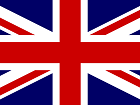Understanding Duty Drawback: Reclaiming Import Duties
In international trade, goods imported into the United States are typically subject to customs duties and taxes. However, the U.S. Customs and Border Protection (CBP) offers a valuable program known as Duty Drawback, which allows importers to receive a refund on duties paid under specific circumstances. Essentially, Duty Drawback is a refund of customs duties and certain taxes paid on imported merchandise when that merchandise, or a commercially equivalent product, is subsequently exported or destroyed.
This program is particularly beneficial in situations where imported goods are further processed or simply pass through the U.S. before reaching a final destination. A common example is when goods are imported into the U.S., and then sold to a foreign buyer and re-exported. In such cases, the duties initially paid on the imported merchandise may be refundable by U.S. Customs.
There are three primary categories of Duty Drawback, each with its own specific requirements:
- Manufacturing Drawback: This type of drawback is available when imported merchandise or eligible substitute merchandise is used in the manufacture of an article that is subsequently exported or destroyed. The exportation or destruction must occur within 5 years of the original import date.
- Unused Merchandise Drawback: Unused Merchandise Drawback applies when imported merchandise is exported or destroyed in its unused condition within 3 years of the import date. Importantly, this category also allows for the substitution of "commercially interchangeable" domestic or other merchandise for the original imported goods. Drawback can be granted on the export or destruction of the substituted merchandise, the original imported merchandise, or a combination thereof, provided the exported merchandise was unused in the U.S. and was in the possession of the drawback claimant.
- Rejected Merchandise Drawback: Rejected Merchandise Drawback is applicable when imported merchandise is deemed unsatisfactory. This includes goods that:
- Do not conform to samples or specifications.
- Were shipped without the importer's consent.
- Were determined to be defective at the time of import.
To qualify, the rejected merchandise must be returned to Customs custody within 3 years of the import date and then subsequently exported or destroyed. Defective status at the time of import can be substantiated by presenting evidence of agreement between the foreign shipper and the importer acknowledging the defect.
Important Considerations Within Each Category:
It's crucial to note that within each Duty Drawback category, there are nuances and specific rules. These include:
-
Substitution: The ability to substitute imported articles with commercially interchangeable domestic goods is a significant feature in certain categories, offering flexibility.
-
Time Limits: Strict time limits apply for manufacturing or exporting articles to qualify for drawback. These timelines (5 years for Manufacturing, 3 years for Unused and Rejected) must be carefully adhered to.
Declaration of Intent to Export:
To effectively utilize Duty Drawback, it's essential to declare your "Intent to Export for Drawback." This notification provides Customs with the opportunity to examine the cargo and verify compliance, streamlining the drawback process.
If you are looking for reliable and efficient shipping solutions from China to the US, or for transit through the US, we offer a comprehensive, hassle-free, one-stop service. Contact us today and request a quote.

 English
English Spanish
Spanish Arabic
Arabic